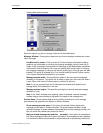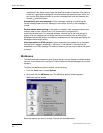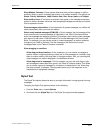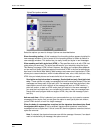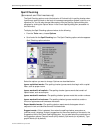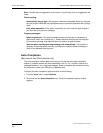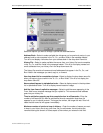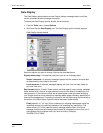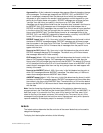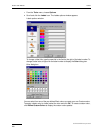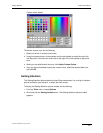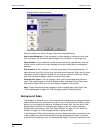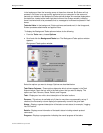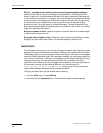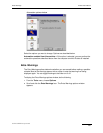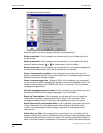
Labels Eudora User Manual
219
QUALCOMM Incorporated
Age-sensitive—If this is selected, message dates appear differently based on the age
of the messages. The three age categories are RECENT, OLD, and ANCIENT. The
age of a message is measured from the date and time at which the message was
composed or sent, based on the sender’s email package, and this depends on your
setting for the Display dates using option. RECENT messages are all those that are
"younger" than the hours you specify in the Hours to be OLD field. ANCIENT
messages are all those that are older than the "expiration time" entered in the Hours to
be ANCIENT field. OLD messages are all those ages which falls between that of
RECENT and ANCIENT messages: they are older than the number of hours specified
in the Hours to be OLD field, but younger than the number of hours specified in the
Hours to be ANCIENT field. The date display format for all messages falling in the
RECENT, OLD, and ANCIENT categories is determined by your entry in the RECENT
format, OLD format, and ANCIENT format fields, respectively.
RECENT format [default: %1]—Your entry in this field determines the format in which
the dates of RECENT messages appear. RECENT messages are all those younger
than the number in the Hours to be OLD field. The default RECENT format of %1 and
the default Hours to be OLD of 24 means that all messages from the past 24 hours
appear with the time.
Hours to be OLD [default: 24]—Your entry in this field determines the point at which
RECENT messages become OLD messages. The default entry of 24 hours means
that messages become OLD after one day.
OLD format [default: %3]—Your entry in this field determines the format in which the
dates of OLD messages appear. OLD messages are those that are older than the
Hours to be OLD but younger than the Hours to be ANCIENT. The default OLD format
of %3, the default Hours to be OLD of 24, and the default Hours to be ANCIENT of 168
means that all messages older than one day and younger than one week appear with
the day of the week.
Hours to be ANCIENT [default: 168]—Your entry in this field determines the point at
which OLD messages become ANCIENT messages. The default entry of 168 hours
means that messages become ANCIENT after a week.
ANCIENT format [default: %2]—Your entry in this field determines the format in which
the dates of ANCIENT messages appear. ANCIENT messages are all those older than
the number in the Hours to be ANCIENT field. The default entry of %2 and the default
Hours to be ANCIENT of 168 means that all those messages older than a week appear
with the date.
Note. Use the format key displayed at the bottom of the window to determine how to
program entries in the Fixed field and the format fields (RECENT, OLD, and ANCIENT). In
each field, enter %1 to stand for the Time, enter %2 to stand for the Date, enter %3 to
stand for the Day of the week, and enter %4 to stand for the Time zone, but only if the
message did not originate from the local time zone. Separate each entry with a space to
improve readability of the display output: for example, %1%2%4.
Labels
The Labels options determine the title and color of the seven labels that can be used to
categorize messages.
To display the Labels options window, do the following.



